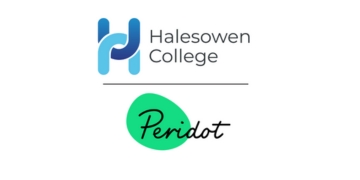The government could better support disadvantaged pupils if its intervention criteria included how heavily populated an area is, instead of the “crude” current measure of regions, researchers have said.
Timo Hannay, the managing director of SchoolDash, said the current measure to target support to schools – based on the number of pupil premium children – was a “binary threshold”.
Categorising pupils based on income alone also meant social deprivation was not “fully captured”, as health, crime and the environment also had effects on poverty.
Other support has been based on where schools are located – for instance, the 55 education investment areas.
But Hannay said this did not group together similar schools as it normally applied across a whole council area, missing the “type” of place a school was located.
SchoolDash analysis applied a clustering algorithm to Index of Multiple Deprivation (IMD) data – which is relative poverty in small areas – and higher education participation rates. IMD data is also based on crime, employment, environment and health outcomes.

The analysis, funded by the Gatsby Foundation, found six clusters of schools with similar characteristics.
“The analysis indicates the importance of place, as well as poverty, but not in the sense of the regions that we tend to talk about,” Hannay said.
“Instead, it highlights the differences between towns and cities on one hand, versus suburbs and rural areas on the other, and the relationships these have with poverty.”
For instance, the analysis found some urban areas performing exceptionally well – despite high income deprivation.
“Affluent urban” areas – richer city areas in London – had large levels of income deprivation, but good outcomes, while “poor urban” areas – particularly in the north and Midlands, but also east London – had adverse socioeconomic indicators and weak education outcomes, but not as bad as would be expected.
But “poor suburban” schools – mostly in the north and Midlands – had mixed IMD indicators, but high deprivation and poor outcomes and had “fallen the furthest behind”.
‘More sophisticated view of disadvantage’
“From this analysis alone we cannot say exactly why, but perhaps we should be considering the educational impact of the cultural and social capital often associated with more densely populated places, not just the single dimension of affluence and poverty that currently gets all the attention,” Hannay said.
“We hope the approach can form the basis of a more sophisticated view of disadvantage that recognises that not all poor communities are the same, and that deprivation has many faces. Understanding this is the first step towards better targeted interventions and policies to address these challenges.”
A Schools Week investigation last month, based on SchoolDash data, revealed the uphill battle faced by leaders of disadvantaged schools.
Schools in the poorest areas struggled more to recruit teachers, had higher supply costs and paid more for basic supplies for pupils.
And many gaps had worsened as schools with the poorest pupils were hit hardest by fall-out from the Covid pandemic.
A new model to group ‘similar’ schools?
• Suburban This represents “middle England” outside the major cities. Socioeconomic and educational indicators are mostly unexceptional.
• Affluent suburban Richer suburban and rural neighbourhoods. The incidence of income deprivation is very low, but educational outcomes are not as good as you might expect
• Affluent urban Richer city areas, especially in London. Much greater levels of income deprivation, but also higher levels of educational engagement and better outcomes.
• Poor urban Especially in the north and the Midlands, but also the east of London and elsewhere. Lots of adverse socioeconomic indicators, coupled with relatively weak educational outcomes – although not as bad as you might think given the levels of poverty.
• Poor suburban Again, mainly in the north and Midlands. IMD indicators are mixed, but income deprivation is high and educational outcomes are poor. These are the areas that have fallen furthest behind.
• Urban Middling city areas in London, Birmingham and Manchester, among other places. Moderately high levels of income deprivation, but relatively good educational outcomes.
















Your thoughts